Manchester is the gateway to the northern regions of England, a major industrial center and the home of the eminent football team Manchester United, which has won many trophies over the long history of its existence. In recent decades, the city has become one of the most attractive tourist centers in the UK. There is a rich nightlife, ample opportunities for good shopping and an interesting excursion program.
The former industrial districts of Manchester have now been transformed into trendy bars, designer showrooms, boutiques and nightclubs. The city has been able to adapt to the current requirements of modern tourists and satisfy demanding requests, which is why the interest in traveling to Manchester is only growing every year.
What to see and where to go in Manchester?
The most interesting and beautiful places for walking. Photos and a short description.
- Manchester City Hall
- Area Castlefield
- Chinatown
- Manchester Cathedral
- Manchester Central Library
- John Rylands Library
- Chatham Library
- Manchester Art Gallery
- Whitworth Art Gallery
- Manchester Opera House
- Royal Exchange Theater
- Palace Theater
- Lowry
- Museum of Science and Industry
- Manchester Museum
- People's Museum of History
- Urbis - museum of urban life
- Beetham Tower
- One Angel Square
- Baths of Victoria
- Fletcher Moss Botanical Garden
- Heaton Park
- Manchester Arena
- Etihad Stadium
- Old Trafford Stadium
Manchester City Hall
The neo-Gothic building of the town hall was erected in the second half of the 19th century according to the project of A. Waterhouse. The structure is built of hard sandstone, which distinguishes it from the typical building of the Georgian era. The facade of the town hall is skillfully stylized "under the Middle Ages", although it lacks decorations to the real Gothic style. On the 85-meter town hall tower there is a clock and a bell carillon.
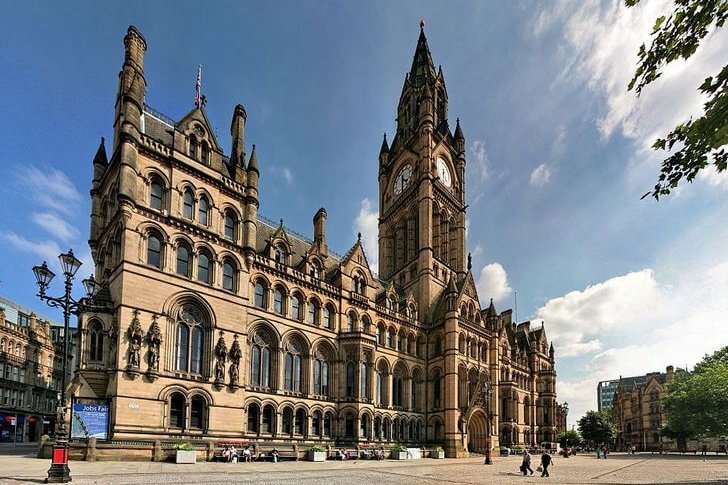
Address: Manchester Town Hall, Manchester, UK
Phone: +44 161 234 5000
Opening hours: 09:00 - 17:00
Area Castlefield
In the 1st century A.D. on the territory of modern Castlefield, the ancient Roman fort Mancunium was founded, from which the history of Manchester began. In the XVIII-XIX centuries, industrial factories were actively built within the district, as the city experienced a construction boom. Nowadays, the former industrial Castlefield is a quiet area for walking and relaxing. The factories houses museums, galleries, lofts and bars.
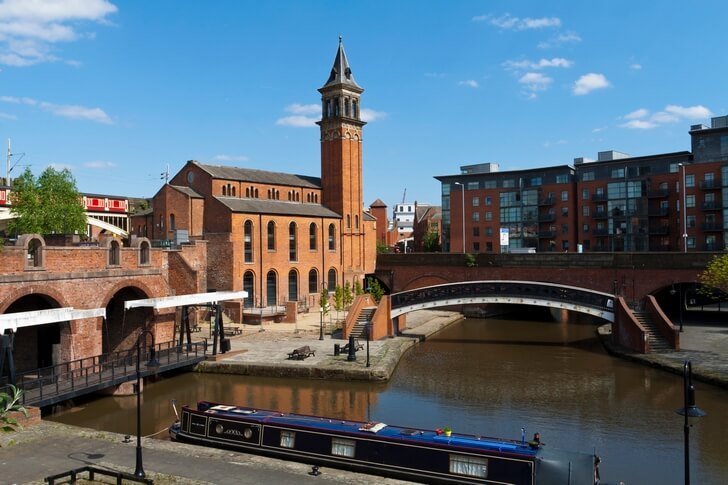
Address: Castlefield, Manchester, UK
Opening hours: 24/7
Chinatown
The area is located in the eastern part of Manchester closer to the center, it is considered the second largest Chinatown in the UK. Chinese settlers emigrated to Manchester in the 20th century. In a fairly short time, they managed to build a "city within a city" with restaurants, supermarkets, numerous shops selling things and products familiar to the Celestial Empire.

Address: Chinatown, Manchester, UK
Opening hours: 24/7
Manchester Cathedral
The temple was built at the end of the 15th century. Construction work was carried out under the direction of D. Stanley, who was related to the royal Tudor dynasty. The first large-scale reconstruction of the cathedral was carried out in the XIX century in the era of Queen Victoria, the second - after the Second World War. Many parts of the building have been restored. For example, unique stained-glass windows were remade only in the 90s. XX century.
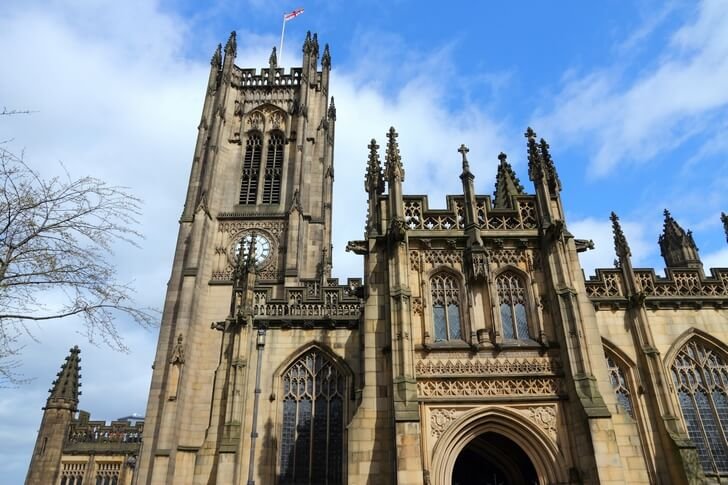
Address: Manchester Cathedral, Manchester, UK
Phone: +44 161 833 2220
Opening hours: 10:00 - 16:00
Manchester Central Library
The Central Book Collection unites the funds of 22 city libraries. Rare and valuable books on medicine, philosophy, politics, history, science, art and other areas of human activity are stored here. The oval library building was designed by E. V. Harris in the 1930s. XX century. The structure is built in neoclassical style, so it seems that it is from an earlier historical era.
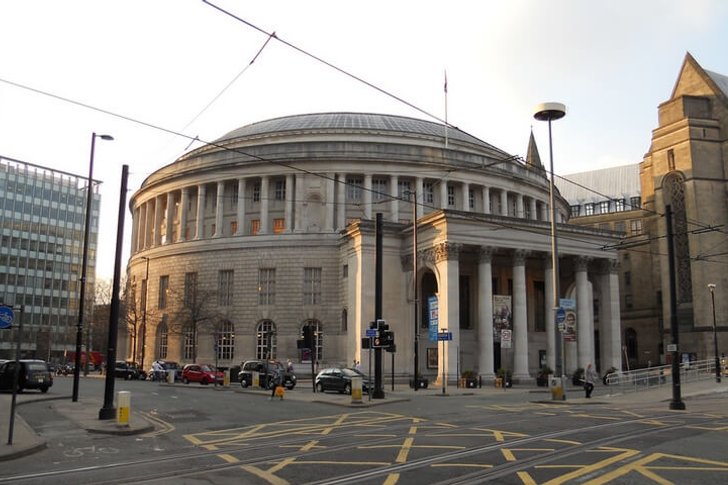
Address: Manchester Central Library, Manchester, UK
Phone: +44 161 234 1983
Opening hours: 09:00 - 19:00
John Rylands Library
The book collection is located in a picturesque neo-Gothic building of the 19th century. The construction was erected at the expense of the widow of the textile industrialist D. Rylands. At first, the collection of theological literature was stored in the library, later books of other genres began to appear. The most significant exhibit is the Gutenberg Bible - a rare copy of the first printed book.
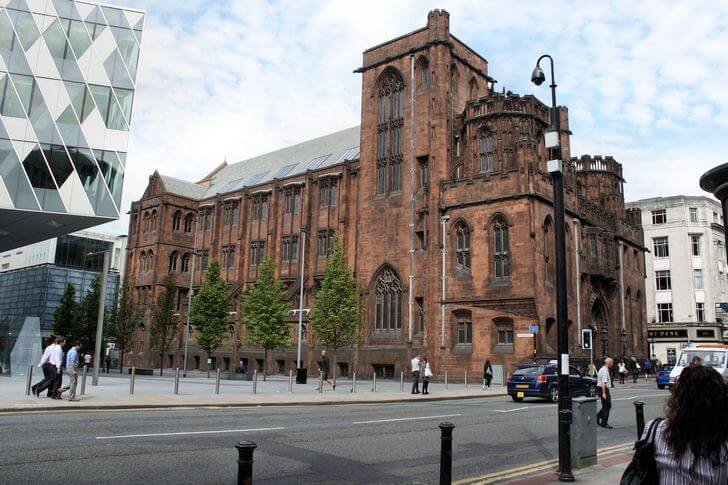
Address: John Rylands Library, Manchester, UK
Phone: +44 161 306 0555
Opening hours: 10:00 - 17:00
Chatham Library
The library is considered one of the oldest in Great Britain; it was founded in the middle of the 17th century at the Chetham Hospital. The library funds contain more than 100 thousand volumes, of which about 60 thousand were published before 1851. In addition to books, newspapers, documents and valuable archival materials are stored here. The Chetham Library was created as a worthy competitor to the book collections of Cambridge and Oxford.
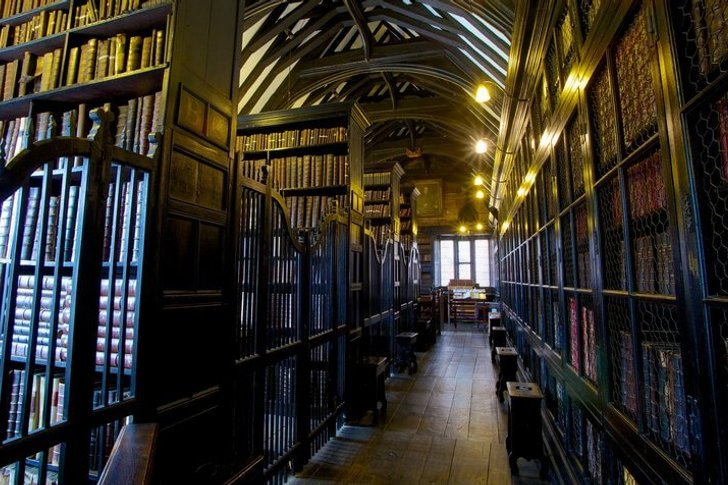
Address: Chetham's Library, Manchester, UK
Phone: +44 161 834 7961
Opening hours: 09:30 - 17:00
Manchester Art Gallery
The museum is located in a monumental building of classical architecture. It has an extensive collection of works by English artists. The gallery was opened in 1924, since then, thanks to the efforts of generous patrons, its funds have grown by tens of thousands of works of art - paintings, drawings, sculptures, photographs, ceramics, furniture and other items. In 2002, two additional buildings were purchased for the gallery.
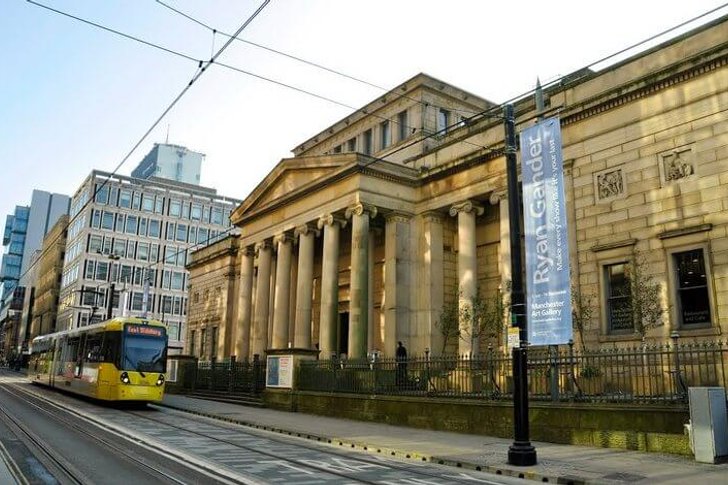
Address: Manchester Art Gallery, Manchester, UK
Phone: +44 161 235 8888
Opening hours: 10:00 - 17:00
Whitworth Art Gallery
The gallery is part of the University of Manchester. The museum was opened with donations from D. Whitworth, an engineer who created a sniper rifle. The gallery exhibits works of art of the 19th-20th centuries, a special place is occupied by the works of Van Gogh, Gauguin and Picasso. In 2003, these valuable paintings were stolen from the museum, but the police quickly found the thieves and returned the paintings to their place.
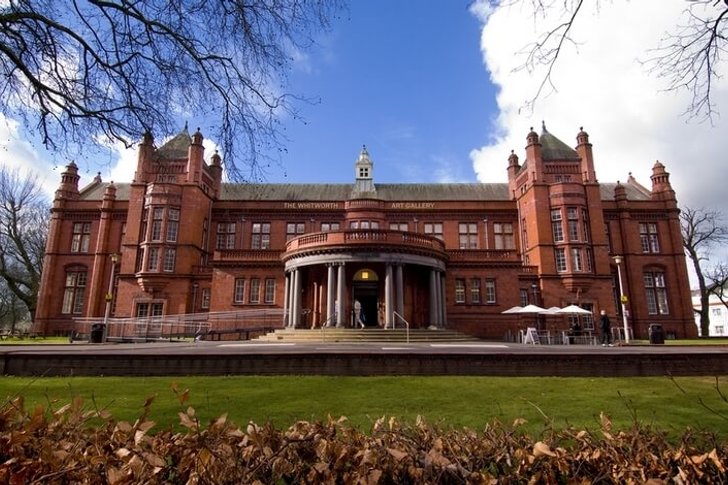
Address: Whitworth Art Gallery, Manchester, UK
Phone: +44 161 275 7450
Opening hours: 10:00 - 17:00
Manchester Opera House
The building of the musical theater was erected in 1912 according to the project of a group of architects. For several decades, the theater did not have its own troupe, so visiting groups performed here. In 1979, the opera was turned into a gaming hall, but after 5 years it was returned to its original purpose. Today, Opera House is one of the most visited theaters in the UK.
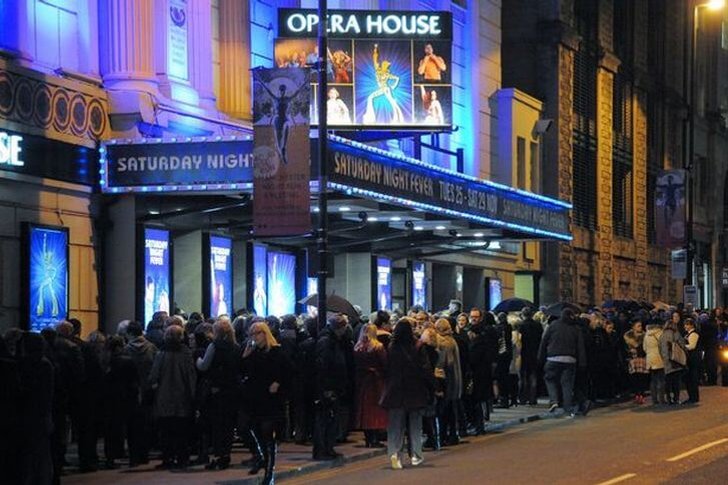
Address: Manchester Opera House, Manchester, UK
Phone: +44 161 245 6600
Opening hours: Varies by event
Royal Exchange Theater
The stage is located in the building of the former cotton exchange, which is located on St. Anne's Square. Once auctions were held here, but by the 60s. In the 20th century, the trade in cotton and textiles gradually faded away, and the theater was housed in the building. Performances of various genres are held on the stage, stand-up comedians perform, concerts and festivals are held. The spacious hall of the theater is designed for 700 people.
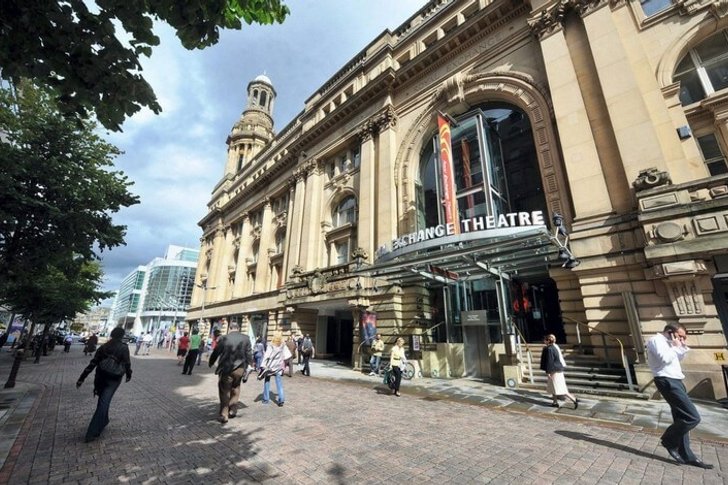
Address: Royal Exchange Theatre, Manchester, UK
Phone: +44 161 833 9833
Opening hours: Varies by event
Palace Theater
The Palace is considered the main theater of Manchester. It is located on Oxford Street. The scene is also known by the informal title of "The Grand Old Lady of Oxford Street". The theater was built at the end of the 19th century under the direction of A. Darbyshire. At the beginning of the 20th century, a reconstruction was carried out, as a result of which the auditorium was expanded to 2600 seats. In terms of popularity, the Palace is second only to London theaters.
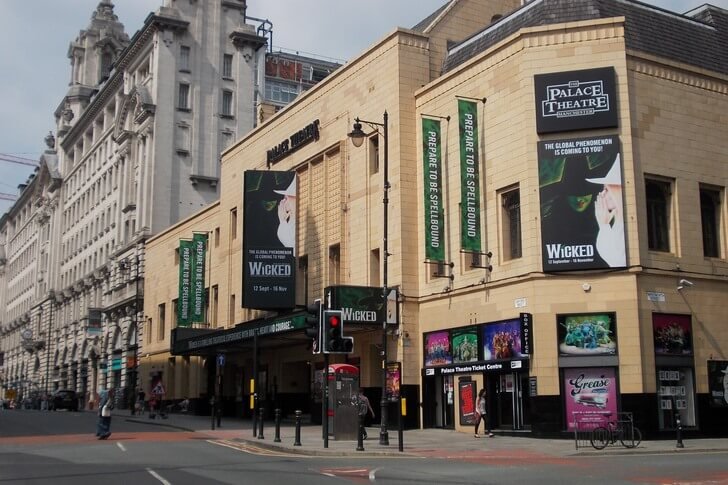
Address: Palace Theatre, Manchester, UK
Phone: +44 161 245 6600
Opening hours: Varies by event
Lowry
Lowry is a full-fledged concert complex, which is located on the banks of the city canal. The main hall of the building can accommodate up to 10 thousand spectators, there are also two additional stages for chamber performances. Lowry has art galleries displaying the work of the artist Laurence Lowry, after whom the complex is named. Due to its versatility, the complex is able to host large-scale concerts and performances with complex scenery.

Address: The Lowry, Manchester, UK
Phone: +44 161 876 2000
Opening hours: 10:00 - 17:00
Museum of Science and Industry
In the museum you can learn about the formation and development of industry in Manchester. In the 70s. In the 20th century, the building housed a railway station. A distinctive feature of the museum is a large number of interactive elements. Visitors can view industrial equipment in operation or observe a natural simulation of the production process.
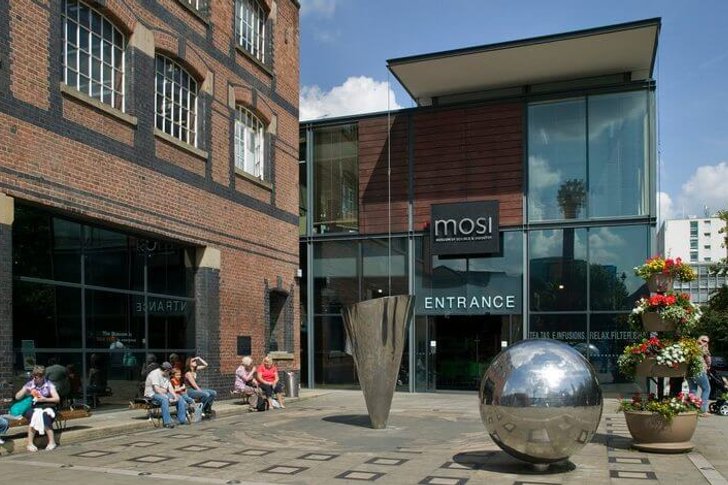
Address: Museum of Science and Industry, Manchester, UK
Phone: +44 161 833 0027
Opening hours: 10:00 - 17:00
Manchester Museum
The museum is part of the University of Manchester, so in addition to storing collections, it is engaged in serious research activities. The museum was founded in the 19th century, during the 20th century there was an active replenishment of funds. At the moment, the number of exhibits has exceeded 6 thousand. The Manchester Museum has a rich archaeological, natural science and anthropological collection.
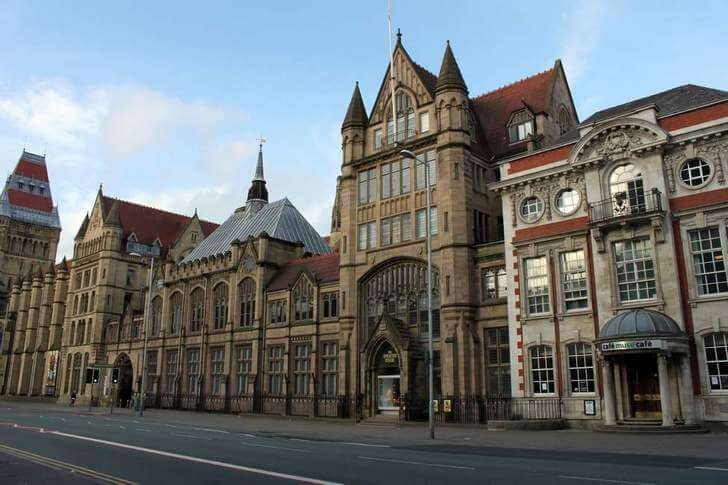
Address: Manchester Museum, Manchester, UK
Phone: +44 161 275 2648
Opening hours: 10:00 - 17:00
People's Museum of History
The exposition of the museum is quite interesting, it covers various aspects of the political life of the city and the country. Here you can learn about the development of democratic consciousness, the life of factory workers in the 18th and 19th centuries, and the history of trade union movements. The museum contains posters, photographs, leaflets and even personal diaries of workers. The exposition is located in a building of modern architecture, designed by C. Henry.
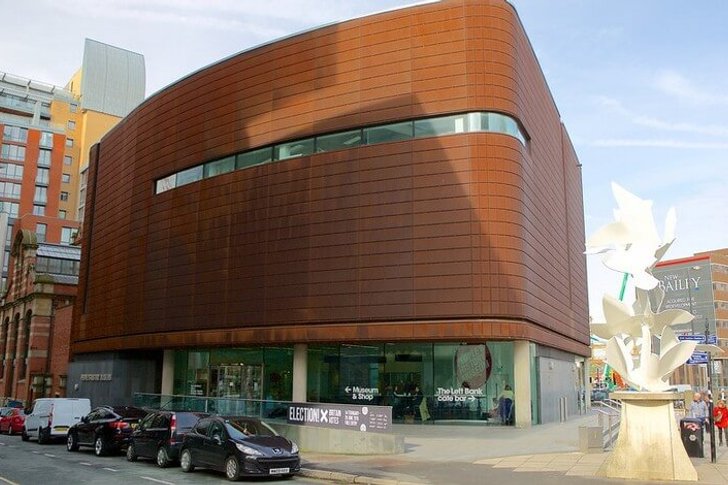
Address: People's History Museum, Manchester, UK
Phone: +44 161 838 9190
Opening hours: 10:00 - 17:00
Urbis - museum of urban life
A modern exhibition center that opened in 2003. Initially, it was a museum of urban life, but later changed the format due to low attendance. Since 2012, the National Football Museum has been located on its territory, where in the Hall of Fame you can get acquainted with the biography of the greatest football players, see their personal belongings and numerous awards. The museum organizes interactive attractions that imitate a real game of football on the field with the involvement of visitors.
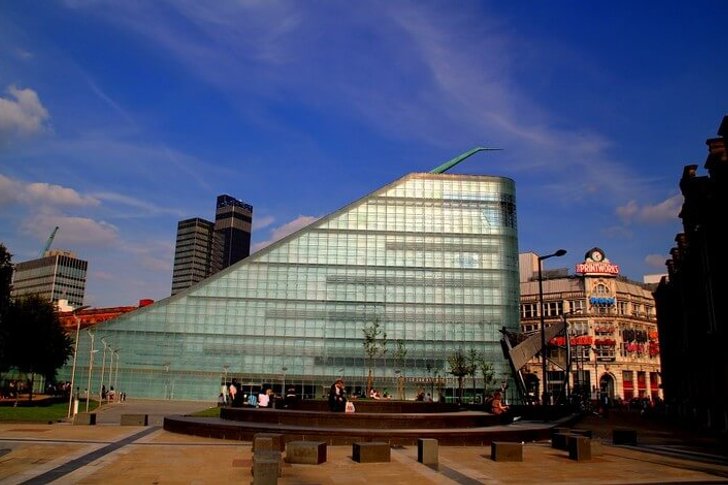
Address: Urbis - Museum of City Life, Manchester, UK
Phone: +44 161 605 8200
Opening hours: 10:00 - 17:00
Beetham Tower
A skyscraper of 47 floors, designed by J. Simpson. The building reaches a height of 168 meters (the highest skyscraper in Manchester). The construction was completed in 2006, it was preceded by long disputes about the need for such a building for the city. But in 2007, the skyscraper received the title of "the best high-rise in the world." Beetham Tower houses residential apartments, a hotel and a nightclub.
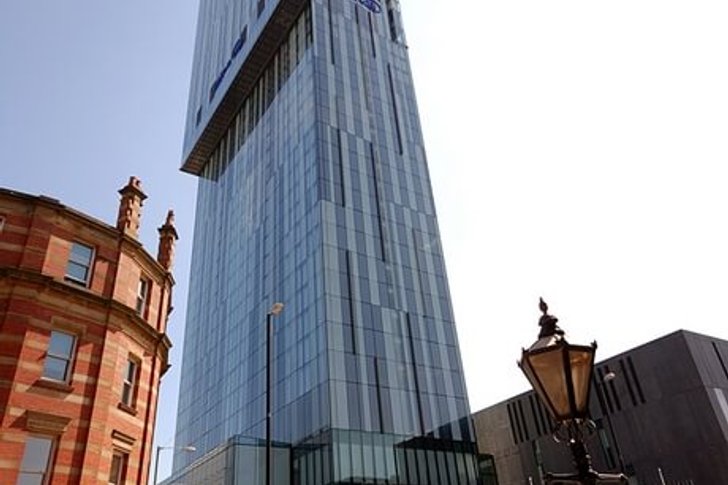
Address: Beetham Tower, Manchester, UK
Phone: +44 161 812 0000
Opening hours: 24/7
One Angel Square
A unique office building, an example of "green" architecture, which consumes 50% less energy than standard city buildings. This allows you to save up to 30% of the budget for its monthly maintenance. The secret lies in the special materials from which the facade is built. Free space is organized inside the building, which allows implementing individual layouts.
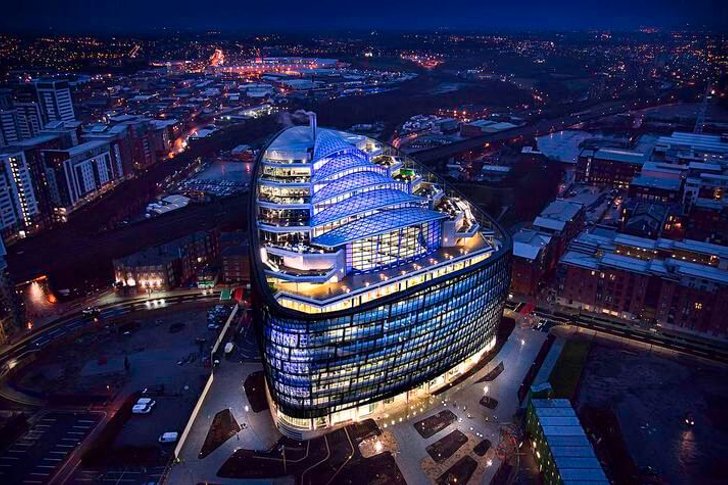
Address: One Angel Square, Manchester, UK
Phone: +44 161 827 7000
Opening hours: 24/7
Baths of Victoria
An architectural structure of the beginning of the 20th century, built in the "English" Baroque style according to the project of G. Price. The building attracts attention with its colorful and unusual coloring. The facade is made of red and yellow bricks. Window openings are decorated with beautiful colored stained-glass windows. The building may well pass for an old city hall. Initially, there was a laundry, swimming pools and a Turkish bath.
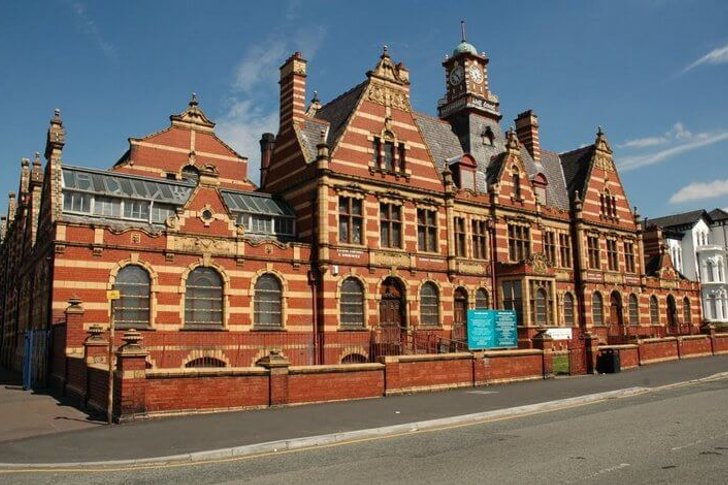
Address: Victoria Baths, Manchester, UK
Phone: +44 161 224 2020
Opening hours: Varies by event
Fletcher Moss Botanical Garden
The garden was opened in 1917 at the expense of the philanthropist F. Moss, who donated all his land and money to the city. The park occupies an area of 4 hectares, it has an excellent infrastructure for the recreation of citizens - there are tennis courts, a rugby field and regular football, as well as cafes and relaxation areas. The flora of the Botanical Garden is quite rich - traditional for England species, tropical plants, numerous coniferous trees and many others grow here.
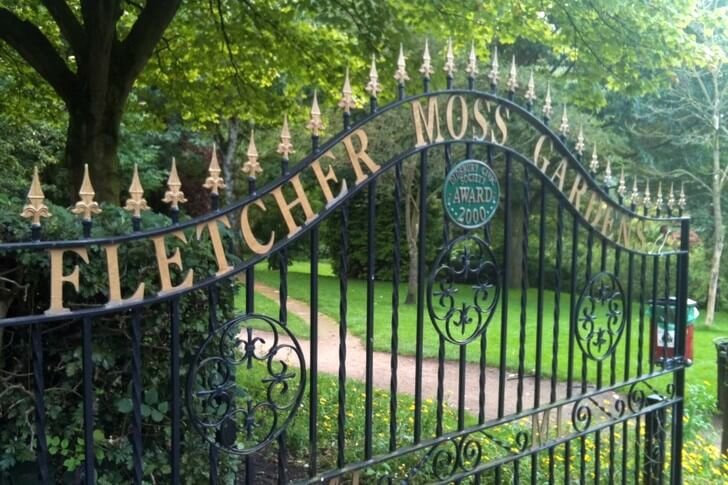
Address: Fletcher Moss Botanical Garden, Manchester, UK
Phone: +44 161 433 0498
Opening hours: 07:00 - 21:00
Heaton Park
A park in the northern part of Manchester, adapted for walking, excursions and active pastime. Here you can ride a boat, a retro tram or a horse, visit a farm with farm animals, as well as a bee apiary. There are three reservoirs in the park where you can swim, but the water in them is cold almost all the time due to the local climate.
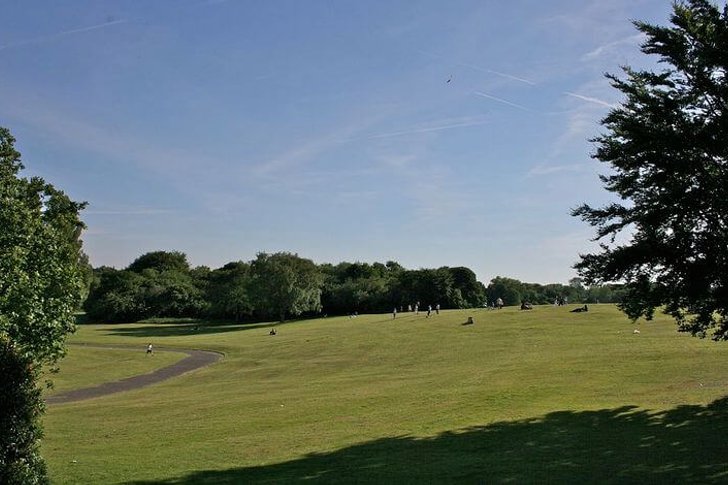
Address: Heaton Park, Manchester, UK
Phone: +44 161 773 1085
Opening hours: 07:00 - 19:00
Manchester Arena
A sports arena that was built for the 2000 Olympics. As a result, the Games were held in a different place, and the stadium eventually became one of the most popular and visited venues in the world. The arena can accommodate about 23,000 spectators. Basically, concerts are held on its territory. Many world-famous artists and bands have performed here - Madonna, U2, Lady Gaga, The Rolling Stones and others.
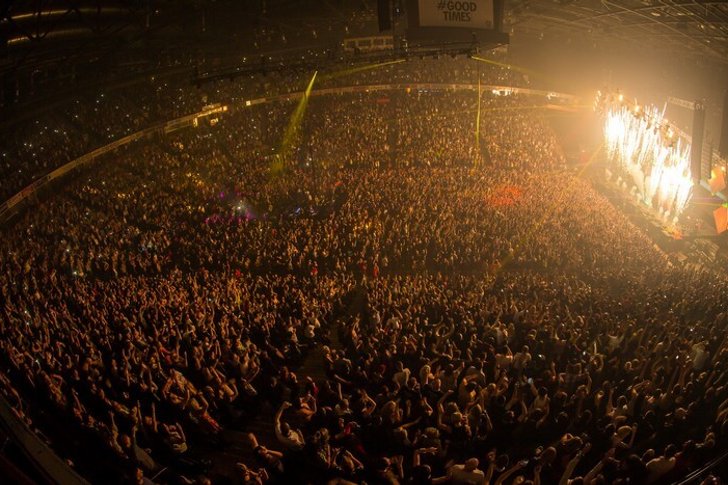
Address: Manchester Arena, Manchester, UK
Phone: +44 161 950 5000
Opening hours: Varies by event
Etihad Stadium
The stadium is designed for 55 thousand spectators, it is home to the football club "Manchester City". At a time when football competitions are not held at the arena, it is used for music concerts. The name Etihad Stadium is a tribute to Etihad Airways, which has been Manchester City's main sponsor for many years.
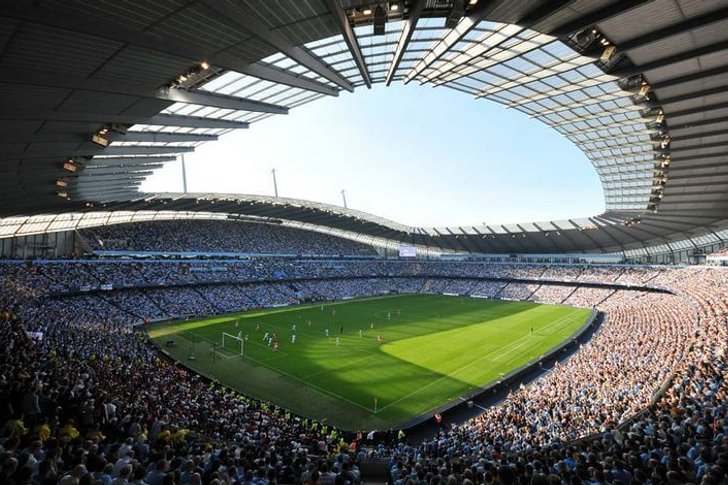
Address: Etihad Stadium, Manchester, UK
Phone: +44 161 444 1894
Opening hours: Varies by event
Old Trafford Stadium
The arena ranks second in size and capacity after London's Wembley. According to the UEFA classification, the stadium has a five-star status. Its capacity is more than 75 thousand people. Old Trafford is the home ground of the legendary club Manchester United. The team settled here in 1910. In the 90s and 2000s. reconstructions and expansions of the stadium were carried out, as a result of which the capacity increased significantly.
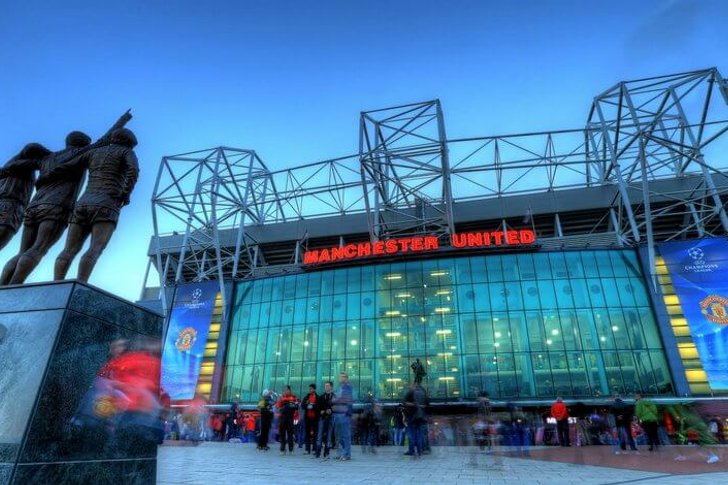
Address: Old Trafford Stadium, Manchester, UK
Phone: +44 161 868 8000
Opening hours: Varies by event
